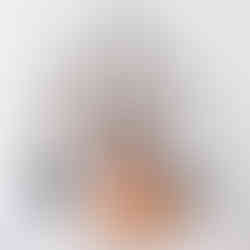
0


0

Aug 31, 20241 min read
0


0


0


0


0


How Your Eyes Work
The light rays enter the eye through the cornea, which is a thick, transparent protective layer on the surface of your eye. Then the light rays pass through the pupil (the dark circle in the center of your eye) and into the lens. When you look at an object, electrical signals travel via the optic nerves to an area in your brain called the thalamus. This then sends the information to the visual cortex, where it is examined in detail. Different parts of the visual cortex simultaneously process the color, shape, movement and depth of the object. Other parts of the cortex put this information together to give you a complete picture of the object. When light rays pass through your pupil, the muscle called the iris (colored ring) makes the size of the pupil change depending on the amount of light that's available. You may have noticed this with your own eye if you have looked at it closely in a mirror. If there is too much light, your pupil will shrink to limit the number of light rays that enter. Likewise, if there is very little light available, the pupil will enlarge to let in as many light rays as it can. Just behind the pupil is the lens and it focuses the image through a jelly-like substance called the vitreous humor onto the back surface of the eyeball, called the retina. The retina, which is the size of your thumbnail, is filled with approximately 150 million light-sensitive cells called rods and cones. Rods identify shapes and work best in dim light. Cones on the other hand, identify color and work best in bright light. Both of these types of cells then send the information to the brain by way of the optic nerve. The amazing thing is, when they send the image to the brain, the image is upside down! It is the brain's job to turn the image right side up and then tell you what you are looking at. The brain does this in a specific place called the visual cortex. Protection Because the eye is such an important and complex part of our body, we have many features which protect the eye. The eyebrows are the strips of hair above your eyes which prevent sweat from running into them. Eyelashes help keep the eye clean by collecting small dirt and dust particles floating through the air. The eyelashes also protect the eye from the sun's and other light's glare. The eyelids sweep dirt from the surface of the eye. The eyelid also protects the eye from injury. Tears are sterile drops of clean water which constantly bathe the front of the eye, keeping it clean and moist.
Optometric examinations 2 to 5 yearsAt 3 years of age or as recommended Poor eyesight is detrimental to a child's learning & social ability. If your child appears to have problems in vision, this is the ideal time to deal with it. 6 to 18 yearsBefore entering the first grade and then every two years or as recommended. Vision may change frequently during the school years. The most common problems are due to the development and progression of nearsightedness18 to 40 yearsEvery two to three years41 to 60 years Every two years Beginning in their early to mid-40s, we experience changes in our ability to see clearly at close distances. This normal aging change in the eye's focusing ability will continue during the 40s and 50s. Also the incidence of eye health problems occur during these years.61 and olderAnnually
Individuals age 61 or older have an increasing risk for the development of cataracts, glaucoma and macular degeneration and other sight threatening or visually disabling eye conditions as well as systemic health conditions. Therefore, annual eye examinations are recommended.
At Risk: Individuals diagnosed with diabetes or hypertension, or who have a family history of glaucoma or cataracts, and those taking systemic medications with ocular side effects or those with other health concerns or conditions.












.png)





Comments